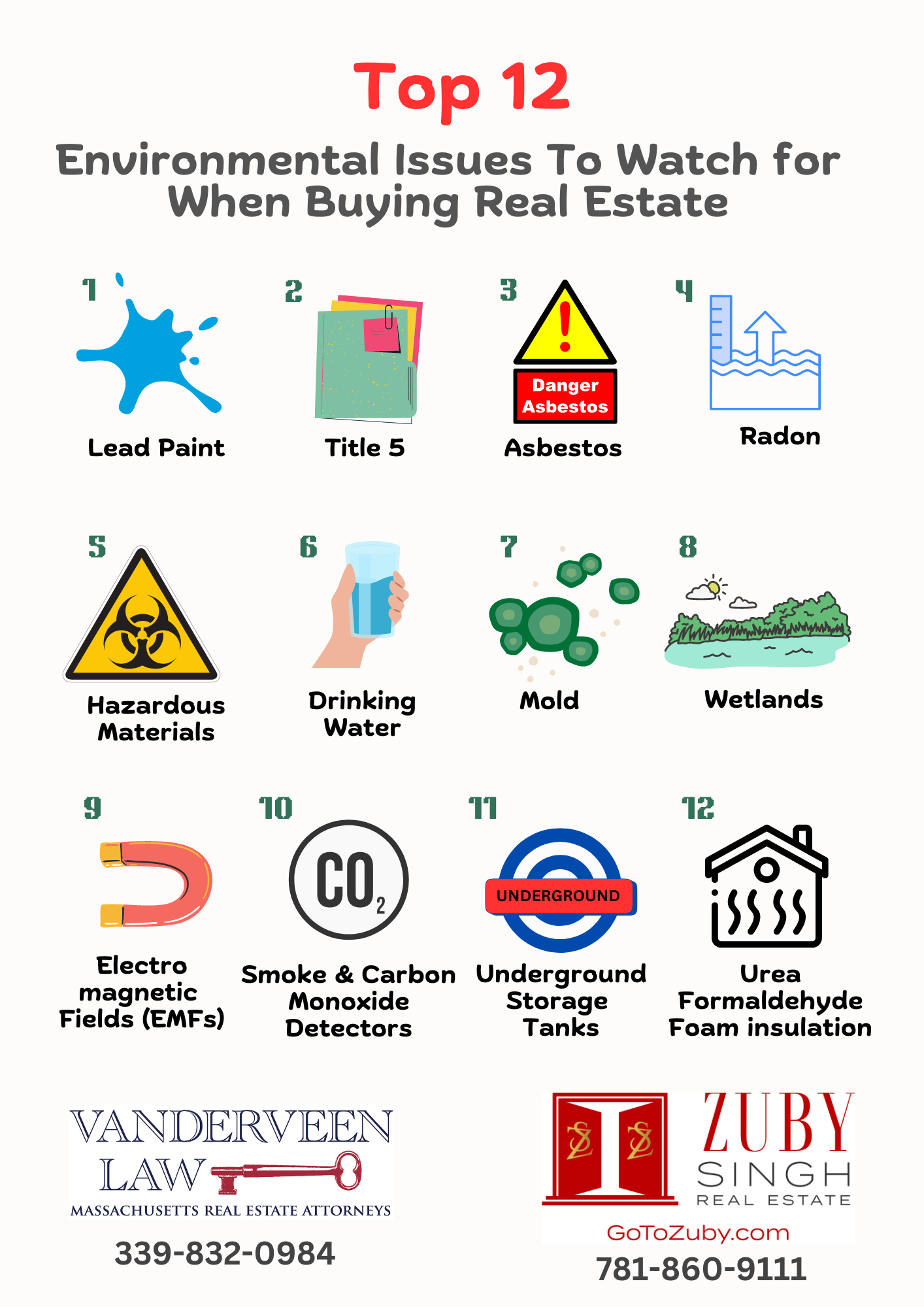
Environmental Factors to Watch for When Buying a Property
When purchasing a property, it’s crucial to consider various environmental factors that can impact the safety, value, and overall suitability of your investment. Here are twelve key factors to keep in mind:
- Lead Paint Homes built before 1978 may contain lead-based paint, which poses serious health risks, especially to children. Federal law requires sellers to disclose known lead paint hazards and provide buyers with relevant information.
- Title 5 In Massachusetts, Title 5 regulations govern the inspection and maintenance of septic systems. A Title 5 inspection is required before the sale of any property with a septic system to ensure it meets health and environmental standards.
- Asbestos Asbestos was commonly used in building materials until the late 1970s. It can be found in insulation, floor tiles, and roofing materials. Disturbing asbestos can release harmful fibers, so it’s important to have older homes inspected and properly managed.
- Radon Radon is a colorless, odorless radioactive gas that can seep into homes from the ground. It is the second leading cause of lung cancer. Testing for radon is essential, and mitigation systems can be installed if high levels are detected.
- Hazardous Materials Properties may contain hazardous materials such as pesticides, solvents, or industrial chemicals. An environmental assessment can identify these risks and help determine necessary remediation steps
- Drinking Water The quality of drinking water is vital. Ensure the property has safe, clean water by testing for contaminants like lead, bacteria, and nitrates. Properties with private wells should be tested regularly.
- Mold Mold thrives in damp environments and can cause health issues and structural damage. Look for signs of water damage and have a professional inspection if mold is suspected.
- Wetlands Properties near wetlands may have restrictions on development and use. Wetlands provide important ecological benefits but can also pose challenges for construction and property value.
- Electromagnetic Fields (EMFs) EMFs are emitted by power lines, electrical wiring, and wireless devices. While the health effects are still debated, some buyers may be concerned about high EMF levels. Testing can provide peace of mind.
- Smoke and Carbon Monoxide Detectors Ensure the property has functioning smoke and carbon monoxide detectors. These are critical for safety and are often required by law in residential buildings.
- Underground Storage Tanks Underground storage tanks (USTs) can leak and contaminate soil and groundwater. Properties with USTs should be inspected for leaks, and old or unused tanks should be properly removed.
- Urea Formaldehyde Foam Insulation (UFFI) UFFI was used in the 1970s for insulation but was later found to release formaldehyde gas, which can cause health issues. Homes with UFFI should be inspected, and removal may be necessary.

 Facebook
Facebook
 X
X
 Pinterest
Pinterest
 Copy Link
Copy Link


